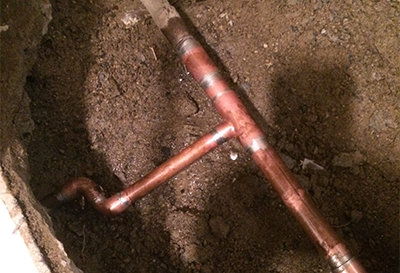Spot Sneaky Water Line Leaks: Six Clever Detection Tricks
Spot Sneaky Water Line Leaks: Six Clever Detection Tricks
Blog Article
How do you actually feel on the subject of Locating water leaks?

Early discovery of dripping water lines can alleviate a prospective catastrophe. Some tiny water leaks might not be noticeable.
1. Examine the Water Meter
Checking it is a surefire way that helps you discover leaks. If it moves, that suggests a fast-moving leakage. This indicates you may have a sluggish leak that can also be below ground.
2. Inspect Water Intake
Examine your water costs as well as track your water consumption. As the one paying it, you ought to see if there are any discrepancies. If you detect sudden changes, in spite of your consumption coinciding, it suggests that you have leakages in your plumbing system. Bear in mind, your water bill must fall under the exact same array each month. An abrupt spike in your costs suggests a fast-moving leakage.
A consistent boost every month, also with the exact same habits, reveals you have a slow leakage that's also gradually escalating. Call a plumber to extensively inspect your building, particularly if you really feel a warm location on your floor with piping below.
3. Do a Food Coloring Test
When it involves water usage, 30% originates from toilets. Test to see if they are running effectively. Decrease flecks of food color in the storage tank and wait 10 minutes. There's a leak in between the storage tank and dish if the color in some way infiltrates your bowl throughout that time without flushing.
4. Asses Outside Lines
Don't neglect to examine your outdoor water lines as well. Must water seep out of the connection, you have a loose rubber gasket. One small leak can lose tons of water and spike your water bill.
5. Examine the situation and inspect
House owners should make it a routine to inspect under the sink counters as well as also inside closets for any bad odor or mold growth. These 2 warnings suggest a leak so prompt focus is needed. Doing regular assessments, also bi-annually, can save you from a significant issue.
If you understand your residence is currently old, maintain a watchful eye on your heating systems, hoses, pipelines and so on. Look for discolorations as well as damaging as the majority of devices and pipes have a life expectancy. They will additionally normally wear away as a result of tear and also put on. Do not wait for it to escalate if you think dripping water lines in your plumbing system. Call a professional plumber right away so you don't end up with a horrible mess in your house.
Early discovery of leaking water lines can minimize a potential disaster. Some small water leakages might not be visible. Inspecting it is a proven method that assists you discover leakages. One tiny leakage can squander bunches of water as well as spike your water bill.
If you presume dripping water lines in your plumbing system, don't wait for it to intensify.
How to Know If Your Home Has a Hidden Leak
Water Meter Reveals Inexplicable Water Usage
If you’d like to test whether or not there’s a leak somewhere in your home, you can do this using your water meter. Here is how to conduct the test:
Don’t use any water in your home for at least 30 minutes; this also means not turning on faucets or water-using appliances.
Go outside, and check your water meter for activity.
If your water meter shows that there was activity, even though no one was using any water, this proves that there is a leak in your home.Visible Mold or Mildew Growth
Leaks behind walls create moist, dark environments that allow mold and mildew to grow and thrive. Eventually, you might see mold growth forming on the wall closest to a hidden leak.
If mold is growing in an area that receives a high amount of moisture, such as a bathroom, it may simply be an indication that better ventilation is needed. However, if you see mold growth on a wall or the ceiling in an area where you would not expect, you probably have a hidden leak.
Musty, Mildew Odor
Sometimes you might not be able to see the mold or mildew that is growing as a result of a leak. However, the smell can give the problem away just as easily. If you catch a whiff of something musty, there’s a good chance that old water is collecting somewhere in your home that you can’t see.
Stained/Warped Walls, Ceilings, or Floors
When your home soaks up water, a variety of red flags can become visible, including ceiling stains, bubbling drywall, warped walls, and sagging floors. While these issues can be caused by excess humidity, they can also be signs that a pipe or plumbing connection has started leaking behind your walls.
Inexplicably High Water Bill
After a while, you get a general sense for what your water bill should be. If you own a pool or sprinkler system, your bill will tend to be higher during summer. However, if you receive a water bill that seems especially high, and you can’t figure out what caused it, then you may have a hidden leak somewhere that’s increasing your bill.
https://www.plumbingjoint.com/blog/2019/july/how-to-know-if-your-home-has-a-hidden-leak/

We were introduced to that write-up about Detecting hidden plumbing leaks through someone on another web address. For those who enjoyed reading our blog post if you please be sure to pass it around. Thanks a bunch for your time. Please check up our website back soon.
Reliable round-the-clock. Report this page